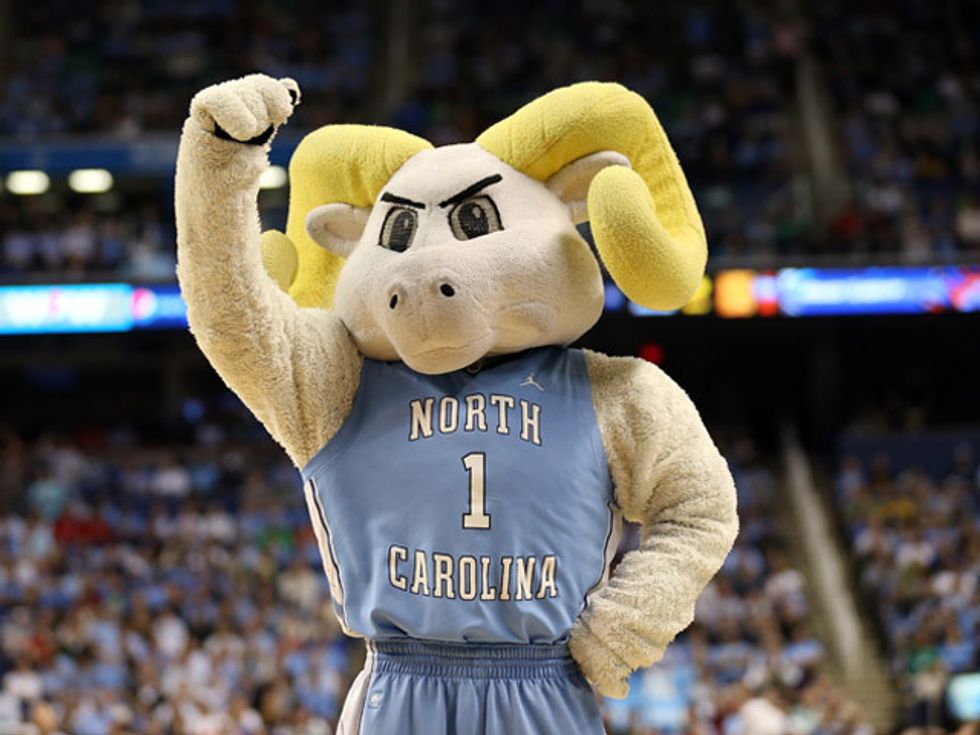It wasn't until I recently attended a Carolina football game, with my boyfriend who was visiting from UNCW, that I discovered a shameful truth. During one of the infamous Carolina chants, he turned to me and asked, "Why exactly is a ram your mascot?" At first, I was perplexed because I never questioned a ram as a mascot; it always seemed fitting for Rameses to represent Carolina. Embarrassed that I had no answer, I also came to the realization that I had no reasoning for why our school is dubbed, "the Tar Heels," or how a ram relates to a tar heel. Though I proudly sing the alma mater and chant, "It's a good day to be a Tar Heel!" every game day, I can not deny that I have overlooked the most fundamental and critical facts about this school.
I know all the routes around campus like the back of my hand, and can name almost all of our major athletes, but I cannot answer what exactly a Tar Heel is. While many students probably already know the answers, I am here for the rest who are uneducated like me. So, for those who are also embarrassed to say they cannot answer those questions, here is a crash course in our history, and why we proudly call ourselves the Tar Heels.
The origins of Tar Heels dates back to two tales in the 1800s. According to one story, during the Revolutionary War the troops of British General Cornwallis crossed a river in North Carolina and soon noticed their feet were covered in a thick tar. At this time, tar was one of the state's most important exports, due to its abundance from the North Carolina pine trees. Some claim that the North Carolina troops purposely dumped tar in the river to sabotage the invading the army. The British would complain about the excessive tar sticking to their feet.
Another story originates during the Civil War era. A group of North Carolina soldiers were chastised for leaving battle, and as a threat, other soldiers warned that they would stick tar on the heels of the fleeing soldiers to make them stay. General Robert E. Lee is claimed to have shouted, "God Bless those Tar Heel boys!"
Whichever story is deemed more accurate, North Carolinians have since adopted the nickname and it soon carried over to our university.
While I was strongly determined to find the connection between a ram and Tar Heel, there is not a true correlation between the two. Instead, it was not until 1924 that the school decided to adopt a mascot. With our neighbors calling themselves a wolf pack, head cheerleader, Vic Huggins, decided UNC needed a mascot of its own. A ram was chosen due to a popular member of the UNC football team, Jack Merrit, who was nicknamed, "Battering Ram." With the coach in consensus and a total of $25, the team purchased their first ram mascot from Texas. Since then, a ram has continued to be a household symbol for Carolina athletics.
Now that we have all been educated on the factual side of our school's history, it is safe to say a Tar Heel is not just a significant person or a certain historical moment, it has grown into its own entity. The Carolina student body now identifies a Tar Heel with our pride, determination, and strength. This university has adopted the word and defined it. We are Tar Heels and we proudly hail Rameses and confidently wear feet on our shirts because we have claimed the Tar Heel name while making the term synonymous with our school. With such immense school spirit, it is imperative that we reflect upon our roots and understand how the term, "Tar Heel," has evolved to represent our campus.











































